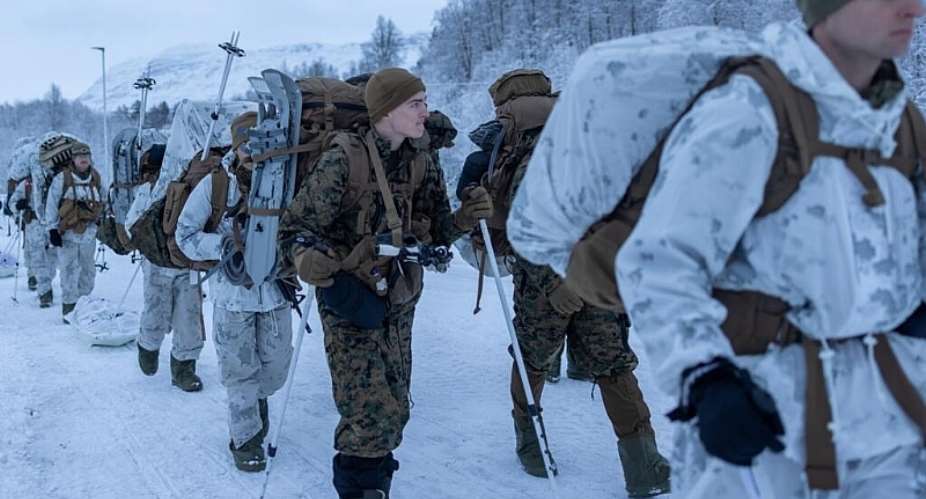In response to the escalating tensions in Europe, with Russia's invasion of Ukraine now in its third year, NATO has begun an extensive military exercise across its newly enlarged Nordic territories spanning Norway, Sweden and Finland.
Starting this Monday, over 20,000 soldiers from 13 nations will participate in drills spanning nearly two weeks across the northern regions of Finland, Norway, and Sweden.
The Norwegian-led exercise, named "Nordic Response 2024" marks Finland's largest ever involvement in a foreign military drill, with over 4,000 Finnish soldiers participating.
This comes after Finland's historic decision to join NATO in April 2023, following decades of military non-alignment.
With Sweden's formal accession to NATO membership nearing completion, both countries have shifted from neutrality to alliance in response to resurgent Russian aggression in the region, specifically the 2022 invasion of Ukraine.
Evolving security situation
Previously known as "Cold Response," the biannual drill has been expanded to include Finland and eventually Sweden, underlining the evolving security situation in the region.
According to Brigadier Tron Strand from the Royal Norwegian Air Force, Commander of the Norwegian Air Operations Centre: "We need to be able to fight back and stop anyone who tries to challenge our borders, values and democracy. With the current security situation in Europe, the exercise is extremely relevant and more important than ever before," he added.
The participating nations in the exercise that runs until 15 March are France, Belgium, Britain, Canada, Denmark, Finland, Germany, Italy, the Netherlands, Norway, Spain, Sweden and the United States.
Roughly half of the participating troops will drill on land.
The rest will train at sea – with over 50 participating submarines, frigates, corvettes, aircraft carriers, and amphibious vessels – as well as in the air with 100 fighter jets, surveillance aircraft and helicopters.
German military leaks
This comes as Berlin finds itself embroiled in a controversy involving a leaked audio recording regarding the potential escalation of Germany's direct support for Ukraine's defence effort against recent Russian gains on the battlefield.
The 38-minute recording purportedly features German military officers discussing the potential use of long-range Taurus cruise missiles in Ukraine.
Chancellor Olaf Scholz has described the matter as "very serious" and has pledged a thorough investigation into the leak.
The debate over supplying Taurus missiles to Ukraine has accentuated the delicate balance between supporting Ukraine and avoiding direct involvement in the conflict with Russia, as the weapons could – in theory – be used against targets far into Russian territory.
While Germany remains a key supplier of military aid to Ukraine, Scholz has expressed reluctance to escalate the situation, emphasizing Germany's commitment to preventing a war between Russia and NATO.
Downplay of Macron's deployment 'gaffe'
The chancellor has long emphasised his determination to help Ukraine without escalating the war and drawing in Germany and NATO, stressing that no German soldiers will go to Ukraine.
Last Monday, French President Emmanuel Macron said the future deployment of Western troops on the ground in Ukraine was not "ruled out" – a suggestion that was quickly dismissed by Germany.
Other Western countries – including the United States and Britain – also said they had no such plans, while the Kremlin warned that conflict between Russia and the US-led NATO military alliance would be inevitable if European NATO members sent troops to fight in Ukraine.





 E-Cedi will be used as a weapon to fight money laundering and corruption — Bawum...
E-Cedi will be used as a weapon to fight money laundering and corruption — Bawum...
 Election 20204: Transfer power to us peacefully for your own good — NDC tells NP...
Election 20204: Transfer power to us peacefully for your own good — NDC tells NP...
 Voter registration: Don't bus minors to registration centres — Nana Akomea warn ...
Voter registration: Don't bus minors to registration centres — Nana Akomea warn ...
 Error in registration slip: Trust the Commission on its mandate — EC assure Ghan...
Error in registration slip: Trust the Commission on its mandate — EC assure Ghan...
 Ejisu by-election: NPP aspirant who projected less than 5% votes for Aduomi cong...
Ejisu by-election: NPP aspirant who projected less than 5% votes for Aduomi cong...
 Election 2024: Stolen BVR kits could be used to illegally register people – NDC ...
Election 2024: Stolen BVR kits could be used to illegally register people – NDC ...
 60% of SHSs taken off double track system – Dr Yaw Osei Adutwum
60% of SHSs taken off double track system – Dr Yaw Osei Adutwum
 Voter registration: We hope to hit over one million registered voters in Volta -...
Voter registration: We hope to hit over one million registered voters in Volta -...
 Akufo-Addo not obliged to disclose full KPMG audit report – Presidency
Akufo-Addo not obliged to disclose full KPMG audit report – Presidency
 ECG staff used ransomware to sabotage paperless system, can you imagine they eve...
ECG staff used ransomware to sabotage paperless system, can you imagine they eve...
